The brick that laid the foundation for Vietnam's journey to master space
A decade since Vietnam successfully launched the first satellites designed, manufactured or owned by domestic engineers, the Vietnamese aerospace industry has recorded steady development steps, gradually mastering high technology and expanding its influence on the international science map.
VNREDSat-1, PicoDragon, MicroDragon and NanoDragon have become typical satellites marking important milestones in Vietnam's journey to space.
Of which, VNREDSat-1 - the first remote sensing satellite owned by Vietnam, developed in cooperation with France - has operated continuously for more than 10 years, far exceeding its design life, becoming a powerful support tool in resource management, environmental protection, agricultural development and monitoring of maritime security.
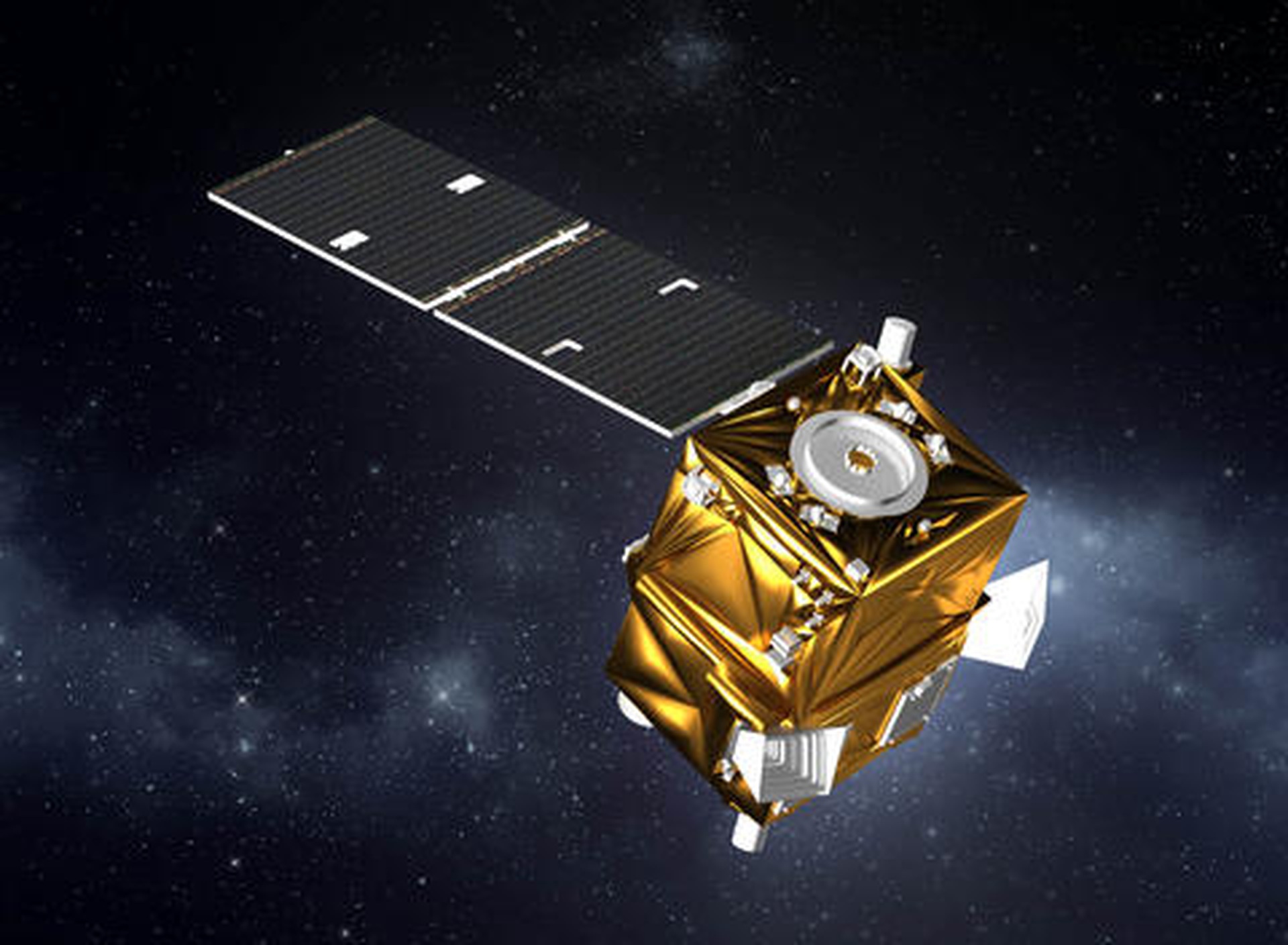
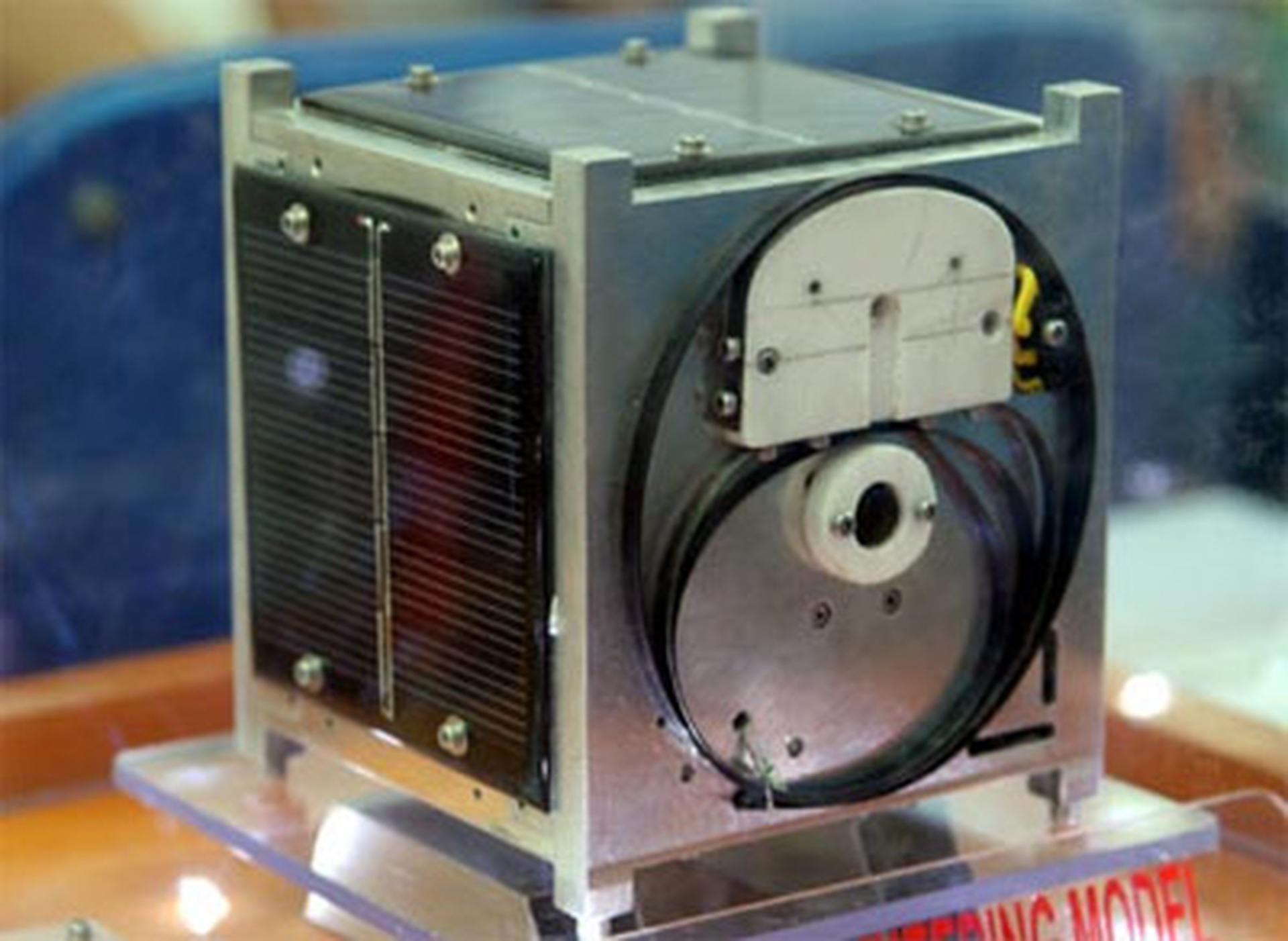
VNREDSat-1 and PicoDragon satellites (Photo: VNSC).
The 2.5-meter resolution images from this satellite have helped monitor to prevent deforestation in the Central Highlands, assess rice production in the Mekong Delta, control salinity intrusion, coastal erosion or flooding due to climate change.
Data from VNREDSat-1 is also used for security and defense purposes at key locations such as Hoang Sa and Truong Sa, promptly detecting illegal activities, contributing to protecting national sovereignty.
Not only stopping at owning satellites, Vietnam has entered the stage of independent manufacturing. PicoDragon - the first pico satellite made by Vietnamese people - was launched into space in 2013. To this day, we are still proud that this is the first satellite made by Vietnam itself and successfully operating in space.
Technological autonomy - From ambition to reality
Following that success, MicroDragon (2019) and NanoDragon (2021) officially marked Vietnam's gradual mastery of satellite design, integration and manufacturing, opening up the possibility of developing a small satellite ecosystem, suitable for economic conditions and national technology development strategy.
MicroDragon, weighing 50 kg and a collaboration with Japan, is a satellite designed to take images of seawater color, serving to assess the quality of the coastal environment, contributing to the strategy of exploiting and protecting marine resources.
Meanwhile, NanoDragon is much smaller in size, weighing only 4 kg, designed and manufactured entirely in Vietnam by the engineering team of the Vietnam National Space Center (VNSC), and is integrated with an AIS signal receiver - an important technology in maritime surveillance.
Although mainly experimental, these two satellites have trained a generation of young engineers, mastering design, simulation, integration and testing capabilities, creating the premise for more modern satellite projects in the future such as LOTUSat-1 and LOTUSat-2.
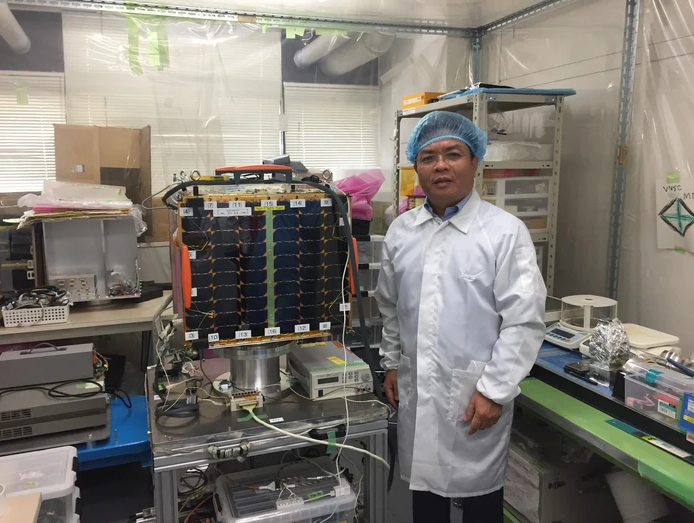
Associate Professor Dr. Pham Anh Tuan checks the MicroDragon satellite before transferring it to the launch service (Photo: VNSC).
Sharing with Dan Tri reporter, Dr. Le Xuan Huy, Deputy General Director of VNSC, assessed that the satellites researched and manufactured by Vietnam have brought about important practical impacts and laid the foundation for the development of Vietnam's space technology.
"VNREDSat-1 brings great practical impact in resource management, environment, agriculture and sovereignty over sea and islands, while MicroDragon and NanoDragon play an important role in building technological capacity, preparing for future self-reliance," said Dr. Huy.
Of which, NanoDragon, launched in 2021, is a milestone in Vietnam's journey to master space technology because this is the first satellite designed, manufactured and fully integrated by the engineering team of the Vietnam Space Center, under the Vietnam Academy of Science and Technology.
What makes NanoDragon special is its independent development process, from system design, component manufacturing to integration in Vietnam. However, because Vietnam does not have a full environmental testing infrastructure by 2021, the satellite must be brought to Japan for a one-time environmental test.

Vietnamese engineers design and manufacture NanoDragon satellite (Photo: VNSC).
This is a big challenge, because satellites operate in harsh space environments (radiation, large temperature fluctuations, zero gravity) and cannot be repaired after launch. Therefore, environmental testing is the only basis to ensure that the satellite works well, but testing only once increases the risk.
"NanoDragon proves Vietnam's endogenous capacity, reduces dependence on foreign technology, and paves the way for future remote sensing satellite constellations," Dr. Huy affirmed.
Projects such as LOTUSat-1 (Earth observation radar satellite) which is about to be launched will mark a major step forward as Vietnam for the first time approaches and gradually masters radar technology - a complex field with high strategic value.
If successful, this will be the first satellite in Southeast Asia to use modern radar technology, helping to monitor weather, natural disasters, and island security regardless of cloud or night conditions - something that optical satellites like VNREDSat-1 cannot do.
International cooperation: A bridge to bring Vietnam into the space technology map
Besides manufacturing and operating satellites, the important role of international cooperation programs in training human resources and transferring technology to Vietnam's aerospace industry cannot be denied.
Within the framework of the Vietnam Space Center Project, many Vietnamese engineers have been trained at the University of Tokyo, Keio University, Hokkaido University, Tohoku University and Kyushu Institute of Technology and have directly participated in the process of manufacturing and operating satellites at advanced research facilities.
Not only Japan, France is also a strategic partner of Vietnam when cooperating to develop the VNREDSat-1 satellite and supporting the improvement of the capacity to use remote sensing data.
With the US, Vietnam has taken initial steps in accessing small satellite technology and developing space engineer training programs through international seminars and forums.
Thanks to these collaborations, Vietnamese engineers not only master technical knowledge but also learn how to manage high-tech projects, standardize testing processes and operate satellites - vital factors to gradually master space technology.
From the S-shaped strip of land to space: A new position on the world science map
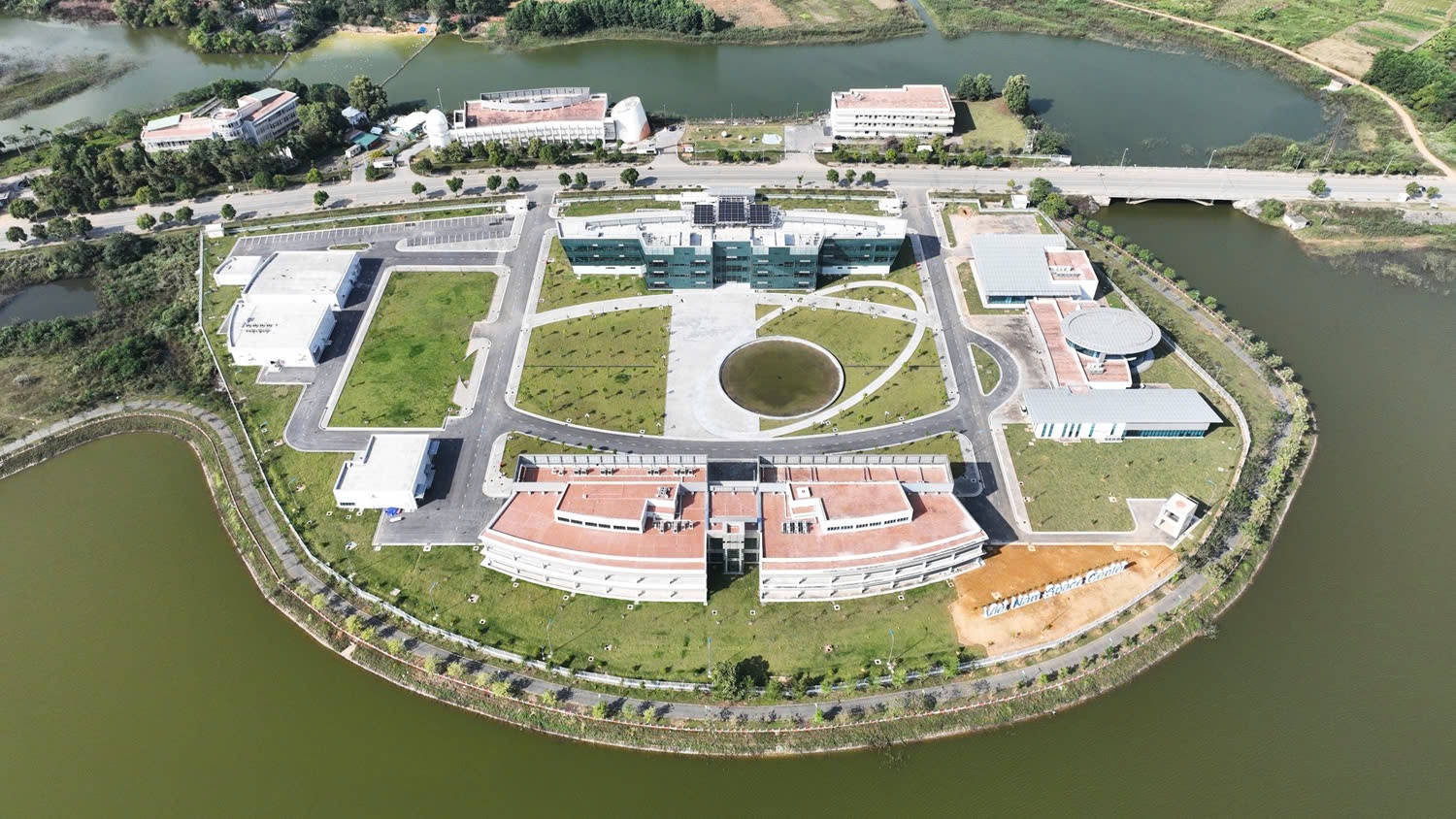
The Vietnam Space Center in Hoa Lac is a special zone for technology transfer and satellite image data application, helping to manufacture, integrate, test and control satellites. Along with that is training and disseminating knowledge about satellite technology (Photo: VNSC).
Vietnam's aerospace development journey, although starting later than many countries, is on the right track and has an impressive growth rate.
While many ASEAN countries still mainly import satellite data from abroad, Vietnam has developed small satellites itself, mastered most of the technical aspects and gradually formed a national satellite network to serve sustainable development.
Internationally, Vietnam is known not only for its ability to self-manage small satellites but also for its ability to train human resources, especially young engineers trained through practice, playing an important role in new projects.
Despite many challenges, especially in testing infrastructure and core technology, with a clear strategy and persistent investment, Vietnam is gradually affirming its position as a country mastering space technology in the region.
On the occasion of the April 30th holiday, when the whole country looks towards the achievements of national construction and development, the journey to conquer space of Vietnam's science and technology industry - starting from small satellites but of great stature - is a clear demonstration of the aspiration to reach far, for the spirit of non-stop innovation, for an independent, modern Vietnam, and strongly integrated into the global technology flow.
Source: https://dantri.com.vn/khoa-hoc/viet-nam-va-hanh-trinh-viet-ten-minh-len-ban-do-vu-tru-20250430001935431.htm


![[Photo] Performance of the Air Force Squadron at the 50th Anniversary of the Liberation of the South and National Reunification Day](https://vphoto.vietnam.vn/thumb/1200x675/vietnam/resource/IMAGE/2025/4/30/cb781ed625fc4774bb82982d31bead1e)


![[Photo] Flag-raising ceremony to celebrate the 50th anniversary of the Liberation of the South and National Reunification Day](https://vphoto.vietnam.vn/thumb/1200x675/vietnam/resource/IMAGE/2025/4/30/175646f225ff40b7ad24aa6c1517e378)
![[Photo] Chinese, Lao, and Cambodian troops participate in the parade to celebrate the 50th anniversary of the Liberation of the South and National Reunification Day](https://vphoto.vietnam.vn/thumb/1200x675/vietnam/resource/IMAGE/2025/4/30/30d2204b414549cfb5dc784544a72dee)





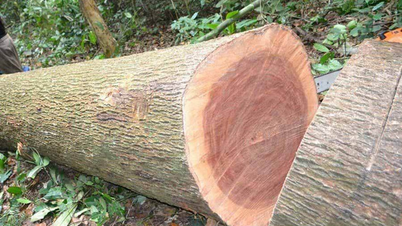







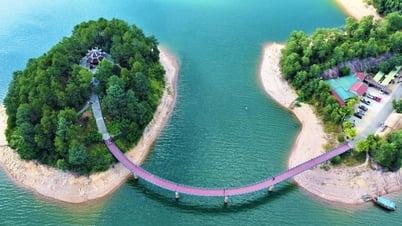


















































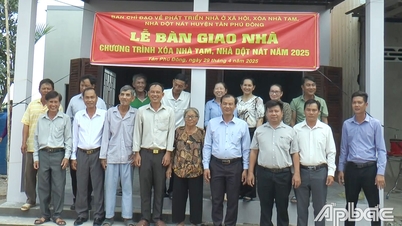



















Comment (0)